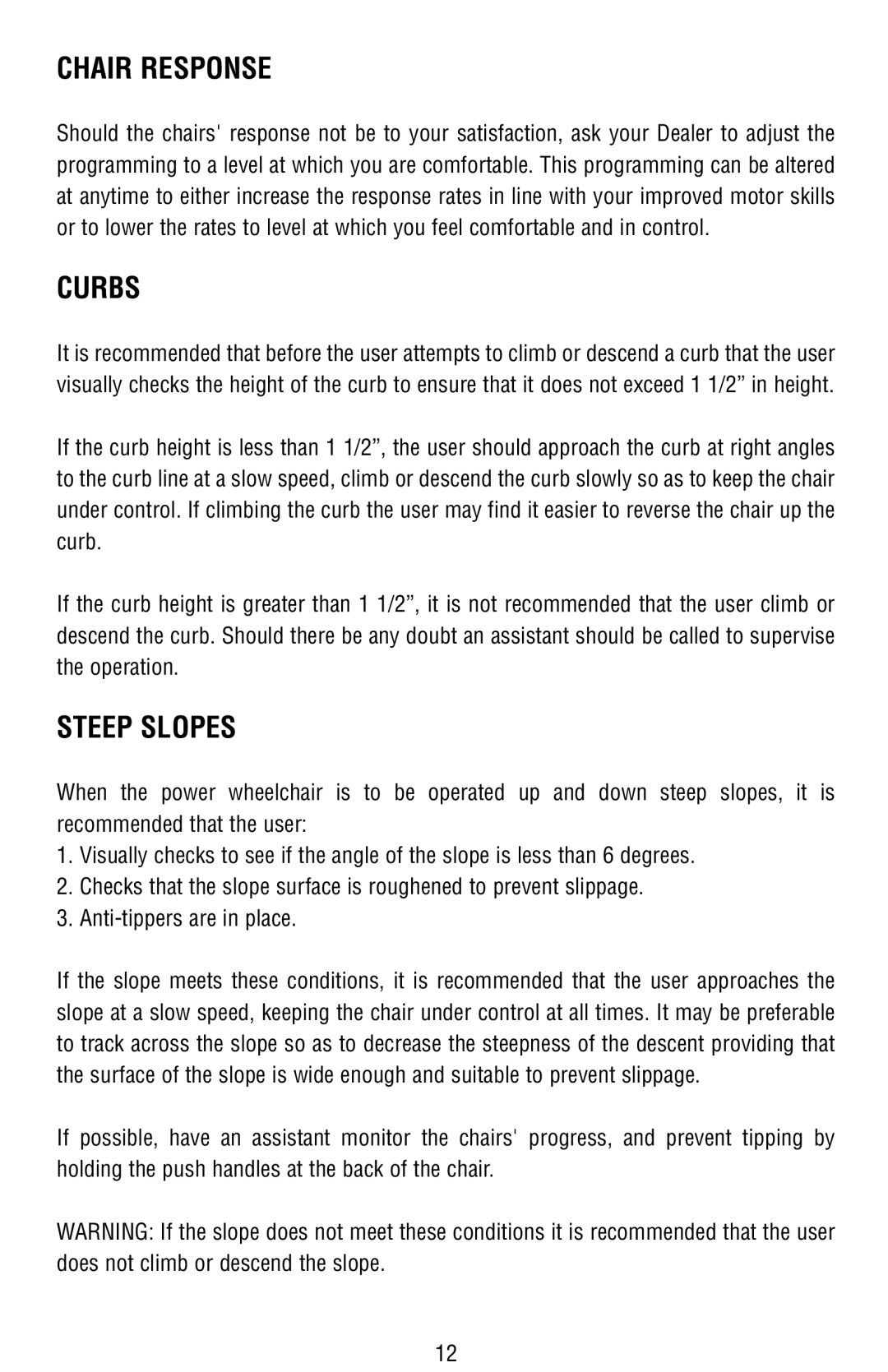CHAIR RESPONSE
Should the chairs' response not be to your satisfaction, ask your Dealer to adjust the programming to a level at which you are comfortable. This programming can be altered at anytime to either increase the response rates in line with your improved motor skills or to lower the rates to level at which you feel comfortable and in control.
CURBS
It is recommended that before the user attempts to climb or descend a curb that the user visually checks the height of the curb to ensure that it does not exceed 1 1/2” in height.
If the curb height is less than 1 1/2”, the user should approach the curb at right angles to the curb line at a slow speed, climb or descend the curb slowly so as to keep the chair under control. If climbing the curb the user may find it easier to reverse the chair up the curb.
If the curb height is greater than 1 1/2”, it is not recommended that the user climb or descend the curb. Should there be any doubt an assistant should be called to supervise the operation.
STEEP SLOPES
When the power wheelchair is to be operated up and down steep slopes, it is recommended that the user:
1.Visually checks to see if the angle of the slope is less than 6 degrees.
2.Checks that the slope surface is roughened to prevent slippage.
3.
If the slope meets these conditions, it is recommended that the user approaches the slope at a slow speed, keeping the chair under control at all times. It may be preferable to track across the slope so as to decrease the steepness of the descent providing that the surface of the slope is wide enough and suitable to prevent slippage.
If possible, have an assistant monitor the chairs' progress, and prevent tipping by holding the push handles at the back of the chair.
WARNING: If the slope does not meet these conditions it is recommended that the user does not climb or descend the slope.
12
